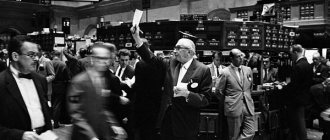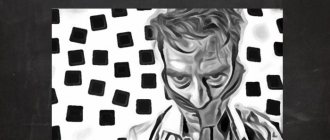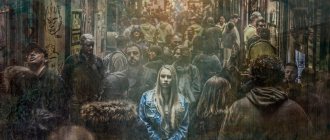It often happens that our general condition of the body and well-being worsens. Subsequently, any person can be overcome by various ailments and diseases. And we often do not suspect that the cause of this is tension (so-called dysfunction, energetic or mechanical). As a modern technique, perceptual osteopathy is aimed at minimizing such dysfunctions or eliminating them completely. To do this, various methods are used, which will be discussed below. A distinctive feature of the methods is that they work with the entire human body, as a result of which it is possible to consider the problem in connection, preventing or eliminating not the consequence, but the cause of the disease.
CONCEPT, PROPERTIES OF PERCEPTION. CONGENITAL AND ACQUIRED IN PERCEPTION (GIBSON, BRUNNER)
Perception is the holistic reflection in the human mind of objects or phenomena with their direct impact on the senses. Perception is the knowledge of the quality of the whole, and not of its individual properties. according to modality : visual, auditory, tactile. By volume – perception of space;
time perception; perception of images, performances. Perceptual properties:
• objectivity – performs orienting and regulating functions in practical activities;
• the integrity of perception is formed on the basis of a generalization of meanings about individual properties and qualities of an object, obtained in the form of various sensations;
• constancy of perception is defined as the ability to perceive objects as relatively constant in shape, color and size, regardless of changing conditions;
• categoricality – conscious perception of an object, i.e. mental assignment of it to a certain group, class;
• structure of perception.
Among the most important properties of perception, the relationship between figure and background should be noted.
The problem of innate and acquired in perception is set out in the works of many outstanding psychologists. Gibson developed two theories of perceptual learning:
• perception as a process of addition: the correspondence between perception and stimulation gradually decreases;
• as a process of discrimination: increasing the correspondence between perception and stimulation.
A multi-base spiral discrimination experiment: Evidence for perceptual learning. With learning, the ability to discriminate increases. Experiment to lower the threshold of skin sensitivity.
The main forms of presentation of the world: action, image, sign. The child deals mainly with perceptual images. Then there is a separation of the perceptual image from a specific object - non-perceptual images (more abstract). The mechanism of transition is action. Concrete - abstract. Global – differentiated. The external is the essential.
Affect divides the homogeneous world (sensory flow) of the child - the transition to the world of objectivity through manipulation with objects (pre-verbal form of socialization). Dependence of images on actions.
Bruner: experiment with the ring. When the body position changes, the entire motor structure is disrupted - this is an expression of the child’s cognitive egocentrism. The key to perceiving the world for a child is his own stability (for an adult, the immobility of objects).
Diffuse and global perception in childhood (it is difficult to isolate a disguised figure in a picture).
Perceptual mechanisms, processes and functions
We live in the surrounding world, which consists of objects and phenomena. One way or another, they constantly influence our consciousness, and our consciousness perceives them .
A person does not just see what is around him, he does not just hear some sounds or smell. He, sometimes even almost subconsciously, evaluates all this, classifies it, tries to select it from the point of view of some benefit.
The mechanism of human perception is complex and not yet fully understood. But scientists identify certain of its signs, note their features and methods of influencing consciousness.
A person’s perception of the surrounding world in psychology is called perception. The perceptual psyche has many features that have not yet been fully studied.
Sensation and perception: how do these cognitive processes differ from each other? Find out about this from our article.
Concept and classification
Perception (perception) is a diverse process of reflecting phenomena or objects when they directly affect the human senses.
Accordingly, according to the influence of phenomena or objects on certain human sensory organs, types of perception are classified :
- visual,
- auditory,
- olfactory and others
The matter around us exists in the sphere of space, time, movement and direction, and perception is also classified according to these characteristics.
Moreover, we are able to perceive space by distinguishing the sizes of objects at different distances. We understand that a distant object seems smaller in size than the same one that is next to us. But we still perceive them as the same.
Finally, depending on the complexity of the perception process, it is divided into instantaneous (in science it can be defined as simultaneous) and gradual (it is also called successive).
Properties and processes
Perception has characteristic properties:
- objectivity;
- structure;
- integrity;
- selectivity;
- constancy;
- apperception (the so-called dependence on past life experience);
- volume and its limitations.
Perception consists of several sequential perceptual processes:
- detection;
- discrimination;
- identification;
- categorization;
- recognition;
- identification.
Thus, we conclude: the perceptual process is a process of perception that allows us (and not only people, but also animals) not just to passively contemplate the environment, but also to evaluate it, to perceive it in development and as a possibility of using this or that subject.
By the way, the use of surrounding objects as tools is one of the initial signs of human thinking.
According to psychologist B. Ananyev, sensory-perceptual processes (he was the first to introduce such a term) are a chain from the senses to a person’s consciousness, and the mechanism of this activity depends on his experience, images fixed in consciousness and even the range of motor functions.
Levels of the perceptual psyche
There are 2 levels of the perceptual psyche - lower and higher.
The lowest level is characteristic of arthropods and mollusks.
They have objective perception, dividing objects into useful ones and those that should be treated with indifference.
reach the highest level of the psyche. They have a highly developed nervous system, with much more diverse movement functions.
New properties and skills appear in their mental perception
- manipulation of objects;
- generalization based on visual perception;
- activity with the help of these objects, based on the generalization of all these factors.
During a child’s cognition of the world around him, perceptual actions go through several main stages:
- The first stage involves getting to know the surrounding objects.
- At the second stage, a certain restructuring of the sensory processes that occur in the sense organs occurs, children begin to learn the spatial properties of objects.
- At the third stage, actions in the process of perception no longer play a major role, there are fewer of them, and recognition and comprehension of what is perceived takes on the main role.
apperception appears in science .
Apperception
What is apperception in psychology? The term apperception was introduced into science by the researcher G. Leibniz.
He was the first to prove that perception is simply the perception of reality, and apperception is already conscious .
If we return to what has already been said, we can add that apperception is the highest level of perception, the maximum degree of which belongs to man.
The founder of experimental psychology W. Wund , based on this, proved that the main participation in this process is attention, as part of consciousness.
If attention is not focused on a particular object, awareness of it does not occur . But once the concentration of attention occurs, the process of apperception begins, which is the basis of conscious thinking.
According to Wund's theory of apperception, it was the ability to such perception that made a person human.
Perception inevitably depends on previous experience . Let's say that we generally consider many objects briefly, in passing, because we encounter them every day.
For example, in the morning we will not closely examine the kitchen table at which we have breakfast, or the scrambled eggs that are served for breakfast.
But if we try, say, an avocado for the first time, we will perceive this item differently .
Apperception refers to the dependence of perception on a person’s previous experience.
Moreover, this dependence can be expressed in completely different ways in relation to the same subject .
A child , seeing a circle, will only perceive it as a circle. A student will inevitably remember his geometry lessons. A motorist will immediately think of a wheel, and a circus lover will immediately think of a ring.
Professional skills are of great importance in the perception of the environment.
Let's say, a landscape designer, appearing in an unfamiliar garden or park, will immediately determine the components of this design, a gardener will note the well-groomed nature of the site and the moisture of the soil, and a child will look for places where they can play or hide.
Apperception is largely determined by a person's age and knowledge .
With age, the senses, which are the basis of perception, change, and not always in the direction of development. Hearing , for example, often gets worse with old age. But the child is born with good hearing.
Another thing is vision . It develops throughout a person’s life:
- infants have poor eye movement control and have black-and-white vision;
- at 2 months they consciously perceive depth and distance;
- visual acuity during this period in children is already adequate to these indicators in adults;
- at 3 months they acquire color vision;
Gradually, the child develops perceptual abilities - means that form an idea of the world around him, when its individual manifestations affect the human senses.
The following qualities can be considered the main indicators of such abilities at different stages of a child’s development:
- volume of perception, it is measured by a certain number of objects that the subject can perceive, say, within one minute;
- accuracy of perception, which means the correspondence between the image of an object formed in the mind and the object itself in reality;
- completeness is the degree of such correspondence;
- speed of perception, here the time of final formation of the image of an object in the mind is determined;
- emotional reaction to the subject being studied.
To develop these abilities, perceptual modeling - a technique with which in kindergarten children are taught to perceive objects as components of a certain unified whole.
For example, a child is offered an image of a circle on one of the notebook pages.
And on the other there are many disparate elements, from which it is necessary to select the constituent parts of the shown circle or other geometric figure.
If such exercises are performed regularly, gradually complicating the tasks, the student’s overall development (and not just perception) will happen much faster .
As the child grows up, a transcendental unity of apperception . This term appeared in Kant's philosophy.
According to the scientist, this is the unity of self-consciousness, which produces the idea “I think . It does not belong to the sensuality of the organism and constitutes a single whole.
It is the unity of our consciousness, its ideas and sensations that allows us to finally form the correct idea of a particular subject.
Some people have a different sensory-perceptual sphere from others .
Its main characteristic is the concept of sensitivity - the formation of increased sensitivity of certain sense organs under the influence of certain conditions or innate qualities. For example, a sense of rhythm or musicality may be an innate quality.
But sometimes the ability to perceive is influenced by the sphere of human activity. For example, the sensitivity of the fingers of grinders and pianists increases with the moment of improvement in this profession.
THEORIES OF PERCEPTION. STRUCTURALISM. GESTALT THEORY
In modern psychology, the following theories of perception are distinguished:
• classical psychology of consciousness (structuralism);
• Gestalt theory of perception;
• perceptual psychophysics.
Structuralism
V. Wundt – division of the whole into elements (pure sensations). The need for introspection. Analytical: identifying sensations. Sensation as a reflection of the properties of a thing (modality, intensity, extent, duration).
G.E. Muller: the law of specific energies of the sense organs. Our perception does not reflect the properties of the object: perception depends on the specificity of the receptor. The external world consists of elementary stimuli that cause elementary sensations in receptors (the principle of one-to-one correspondence). Sensations and perceptions are different processes. Elementary sensations are then combined into images (associations).
G.T. Fechner – sensory psychophysics: the idea of a one-to-one correspondence between a stimulus and a mental experience: S-P experience. He presented not objects, but physical energies (sounds, colors): the sensation no longer needed to be specially isolated. Analytical introspection: a special effort to decompose a holistic image into individual features. The subject’s activity is not taken into account - everything is spent on identifying primary signs.
Process of perception: superimposition of details. Identification is carried out based on individual characteristics (convenient for modeling perception using machines).
Gestalt theory
Criticism of structuralism:
• rejection of the mechanism of associations as the main one;
• rejection of past experience.
The subject completely defines the image. Identification of object features that influence the identification of a complete figure (proximity of stimuli, similarity, desire for a closed contour, good continuation). The desire for a balanced figure (pregnancy). The circle is the most balanced figure.
V. Köhler: the principle of isomorphism - identical structures exist in the stimulus and in the psyche. The image simply reflects the object, and is not constructed. Perception is not considered as a process.
How to avoid perceptual errors?
The researchers came to the conclusion that when we first look at a stranger, we evaluate him in the following sequence:
- hairstyle;
- eyes;
- facial expression.
D. Carnegie advised doing daily exercises in front of a mirror to help you learn to control your facial muscles. A generous and open smile will help you gain the friendship of others from the first minute of meeting you.
Learning to read the basic emotions of another person will allow you to master the Ekman method. It introduces facial expressions of basic emotional states: joy, sadness, fear, surprise, disgust, anger. This technique has become firmly established in the practice of psychotherapists.
Mastering the skills of perception is the most useful art in human life. It leads to effective interaction with other people and understanding of oneself.
LiveJournal
- Related Posts
- Strength of character
- School maladjustment
- Psychology of communication
« Previous entry
PERCEPTUAL PSYCHOPHYSICS
The stimulus completely determines the image - it has everything. But the subject's activity is necessary to differentiate the stimulus. Subject-oriented theories:
theory of unconscious inferences G.L.F. Helmholtz; Gregory's theory of perceptual hypotheses; Bruner's theory of perception as a categorization process.
The subject himself builds his own perceptual image. Perception is the process of solving a problem.
G.L.F. Helmholtz: with unusual stimulation - an inference about the nature of the stimulus. We select what is useful. This process is the instantaneous nature of the unconscious: 1) there is no reliance on conscious knowledge; 2) irresistibility; 3) follows from past experience (by analogy); 4) the influence of habit, training.
Gregory: when encountering a stimulus, perception puts forward a number of possible interpretations of the image - object-hypotheses. Hypotheses must be plausible. They are limited by past experience. Inconsistency of hypotheses causes an affective reaction.
Bruner: There are perceptual categories - a set of rules for combining objects: generalized ideas about an object stored in past experience. Perception is the solution to the problem of classification, assignment to a category (inference operation). Subject activity.
The categories differ in their readiness (minimizing surprises, maximizing success). Categorization depends on motivation. A measure of the truth of perception: correspondence between the readiness of the category and the probability of real events.
Process of perception: presentation of an object for a very short time - primary categorization.
The subject already has a perceptual readiness to perceive a particular object - a category. The category’s readiness to be discovered, to be transferred from past experience to the present.
Search for signs. If they confirm the category, then a confirmatory check.
Making the final decision. Closedness to additional features.
Possible perceptual conflict (illusions).
Perceptual adaptation - pseudoscope. The world loses its objectivity before the subject begins to act.
Orientation towards interaction, cognition as an understanding of reality: the source of image construction is contact with the object;
• no importance is attached to past experience - only the present;
• perception and thinking become independent processes.
Gibson's ecological theory:
The world is an ecological niche, the habitat of the subject (the subject and the world are not separated). The act of perception is not two-phase (receiving a retinal image and processing information) - there is no need to interpret anything! Perception is not thinking. You must be able to extract information in direct contact with the world. The world has everything necessary for perception.
We perceive not with the retina, but with the whole body - the built-in principle. Perception is a psychosomatic act of a living observer. Retrieval of information is an active and continuous process. The information is non-specific regarding receptors (cf. Müller).
What is “osteopathic perception”?
It is impossible to give an unambiguous definition to the concept of “osteopathic perception”. Everyone can understand the meaning of these words differently. The very concept of “perception”, initially viewed from the position of “perception”, loses its original meaning when understanding this issue in the context of osteopathy. E. Still, who introduced the concept of “osteopathy,” allows us to consider this issue in the light that clinical symptoms in any organism do not develop independently, but are often provoked by various kinds of disorders or dysfunctions. Moreover, locally the symptoms often do not coincide with the area where any disorders are formed. Innate, given by nature so-called. a “sixth sense” that he often doesn’t even suspect is the ability to perceive something that can improve the general condition of the body.
PERCEPTION AND ACTIVITY. GENERAL VIEWS ABOUT MEMORY
Perception is not a passive, contemplative act. A person’s perception, to one degree or another, is reflected entirely: his attitude towards what he perceives, his needs, his interests, aspirations, desires and feelings. Interests and feelings manifest themselves in perception first in the form of involuntary attention. At lower levels, perception occurs “spontaneously”, independent of consciousness, and at higher levels it turns into a consciously controlled activity of observation. In its most advanced forms, observation, acquiring a planned, systematic character, turns into a method of scientific knowledge.
In the course of studying perception, it turns out that it is not a simple sum of sensations, that it is a complex integral process and even a purposeful activity.
In modern psychology, human memory is defined as psychophysiological and cultural processes that perform the functions of remembering, preserving and reproducing information. Memory is a vital human ability. Without it, normal functioning of the individual and its development are impossible. All living organisms have memory, but human memory is at the highest stage of development. If animals have genetic and mechanical memory, then humans have more productive types of memory, which are associated with the use of various mnemonic means. Thus, human memory is a kind of tool that is designed to accumulate and use life experience.
Differences between perception and apperception
View gallery
Along with perception, the closely related concept of apperception is distinguished. The perceptual process is perception. Apperception also represents the reception and processing of visual, auditory and other information. Adding the prefix an- to the main concept is intended to show the complexity of perception. We don't just hear, see, taste, smell and touch - the results are experienced through an individual lens. It necessarily includes previous perceptual experience, on the basis of which a judgment is made about the subject. So we compare each image with the existing standards of shape - is it a circle or a triangle, colors - green or aqua, etc.
Specific knowledge and skills, the current state, mediate our study of the world around us and determine differences in the perception of different people. Personal characteristics have a great influence - inclinations, interests, character, lifestyle in general, which also influence the perception of ourselves.












